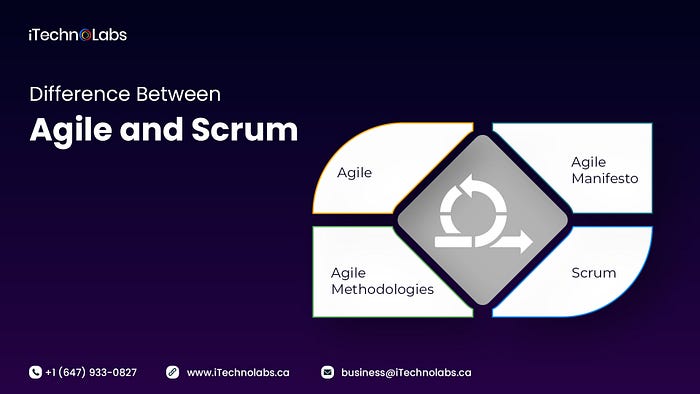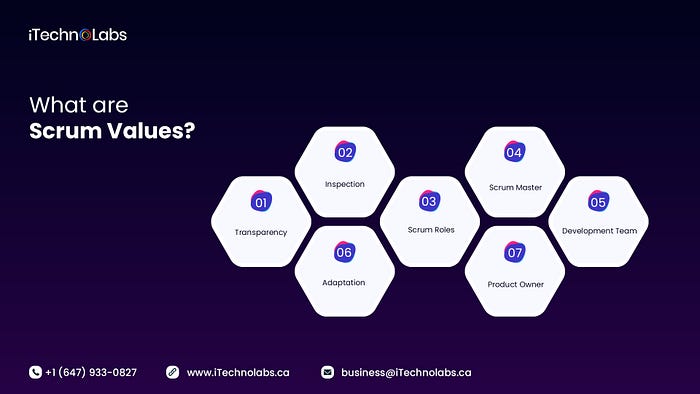A brief difference between Scrum Development or Agile Scrum Methodology?

“Did you know, around 60% of companies experience a huge increase in profits after effectively adopting an Agile approach?”
Agile adoption is not optional anymore. Today, it has become mainstream by the majority of companies. Because it gives you the ability to develop software rapidly and affordably which leads to an uplift in productivity.
In this article, we’ll walk you through the terms and concepts used in Agile Scrum Methodology.
What is Agile Scrum Methodology?
Agile Scrum Methodology is referred to as a project management system, that works on developing software products piece-by-piece. The repetitions are split into well-managed time slabs, each of which takes four-week Sprints. Every sprint provides important features that effectively build a full product. In subsequent sprints, enhancements and additional features based on team and customer feedback are developed into the product.
We know your next question: how agile is different from scrum? Keep reading.
Difference Between Agile and Scrum

The common difference between Scrum and Agile: Agile is a method of project management that utilizes a fundamental set of benefits or policies; Scrum is a particular agile technique utilized based on the project.
The comprehensive comparison of Agile software development practice and the scrum framework can provide you complete understanding.
Agile
Agile is termed a software development process. It involves a cross-functional and proficient team that works to keep improving the delivery experience through consistent feedback shared during the sprints.
Agile procedures thus become an integral part of each delivery to make the process better.
Agile Manifesto
Agile is considered a code of principles. Agile methodology balances the planning and processes. When combined, this manifesto backed up managing software development.
Agile enables teams to work perfectly and lay emphasis on building up complex software projects. It involves methods that are simply accepted and utilize iteration-based methods that result in desired outcomes.
Agile Methodologies
Several Agile methodologies are widely utilized in many diversified industries. These involve Scrum, Crystal, Lean, TDD, and so on.
However, the most popular one is Scrum.
Scrum
Scrum is an excellent framework that makes implementation of Agile easy.
It is the highly popular Agile methodology across the competitive software industry today. Being a lightweight methodology commonly used in software development caters to small sprints that are time-bound and meant for additional features being carefully integrated into the product.
Scrum is managed by development teams with three well-defined roles specifically in the IT business such as Product Owner (PO), Scrum Master (SM), and Development Team.
Scrum has a series of roles, meetings, and project management tools to assist self-organised teams in better design as well as managing their tasks.
Related Article: Difference Between Scrum Development and Agile Scrum Methodology?
What Are Scrum Values?

The Scrum framework was developed based on the empiricism theory. This theory states that every knowledge comes from shared experiences and decision-making procedures on the basis of pre-existing knowledge of what is already known.
That is the reason the scrum technique uses iterations with good increments to make sure that every future risk can be controlled and it easily optimizes future predictions. The key three pillars of empiricism that the Scrum technique supports, are listed below.
Transparency
This is really significant for every stakeholder. There are some crucial aspects of the development method that want to be visible to the team so that there is some outcome. Such aspects have to be really well-defined so everyone can better comprehend and interpret every piece of information.
Inspection
Every artifact utilized in each sprint required to be completely examined by the professional Scrum team. This inspection assists in finding any unwanted or disruptions variances in the process. It has to be done more often but in a better way that doesn’t disturb the sprint.
Adaptation
If there are any problems found at the time of inspection, they have to be fixed. This is so that the final product is acceptable to the consumers. It can be easily solved by adapting or doing some adjustments to the processes so that future deviations are easily minimized.
Scrum Roles
Again, a Scrum team has three important roles: Development Team, Scrum Master, and Product Owner.
